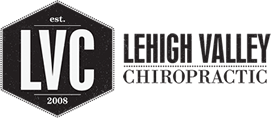Myofascial Pain
What is Myofascial Pain?
Myofascial Pain (aka Myofascial dysfunction) is caused by focal areas of hypersensitivity (trigger points) that develop in muscle tissue. Muscle pain may be caused by trauma, injury, poor posture, stress/anxiety (leading to high levels of muscle tension), overuse, or immobility. Myofascial pain can develop in any muscle, and pain may be felt in the jaw, neck, back, pelvis, upper extremity or lower extremity. Persistent myofascial pain may lead to weakness (due to muscle underuse), migraine, TMJ dysfunction and difficulty sleeping. Long term and wide-spread myofascial pain may develop into fibromyalgia in certain individuals.
How is Myofascial Pain Diagnosed?
Myofascial pain is diagnosed via history and physical examination. Palpation of the painful tissue is the most commonly used diagnostic procedure; this is when the practitioner uses his/her hands to determine if trigger points in the muscle are generating the pain. Myofascial pain is not seen on X-ray, MRI or CT; however, diagnostic imaging may be ordered to rule out a more serious condition. Your Doctor of Chiropractic may also order blood work to rule out drug reactions and other conditions which may also cause muscle pain.
What are the Options for Treating Myofascial Pain?
At Lehigh Valley Chiropractic, the primary methods for treating myofascial pain include myofascial release, Active Release Technique, passive modalities (electric muscle stimulation and ultrasound), heat and ice. Additionally, specific therapeutic exercises for stretching and strengthening are commonly prescribed. Other treatment options not available at Lehigh Valley Chiropractic include muscle injections, acupuncture, and pain medication. Speak with your Doctor of Chiropractic if you have any questions regarding the risks and benefits of treatment options.
Typical Treatment Plan for Myofascial Pain
Expected frequency of care is 1-3 appointments a week for two weeks. After the 6 sessions, a follow-up examination is performed. Depending on your progress, you will either be released from care or further treatment will be recommended.
- Porter, Michael. An Introduction to Neuromuscular Therapy. Duval County Medical Society. January 2004.
- Simon D, Travell J, Simons L. Myofacial pain and Dysfunction: The Trigger Point Manual, Vol 1(2). 2nd Edition. Baltimore: William and Wilkins; 1999.
- Lowe, John C. Hypertonic Fascia. Chiroweb. Aug. 2004.
- George JW, Tunstall AC, Tepe RE, Skaggs CD. The effects of active release technique on hamstring flexibility: a pilot study. J Manipulative Physiol Ther. 2006 Mar-Apr;29(3):224-7.
Tags: back pain bethlehem

 610-868-6800
610-868-6800